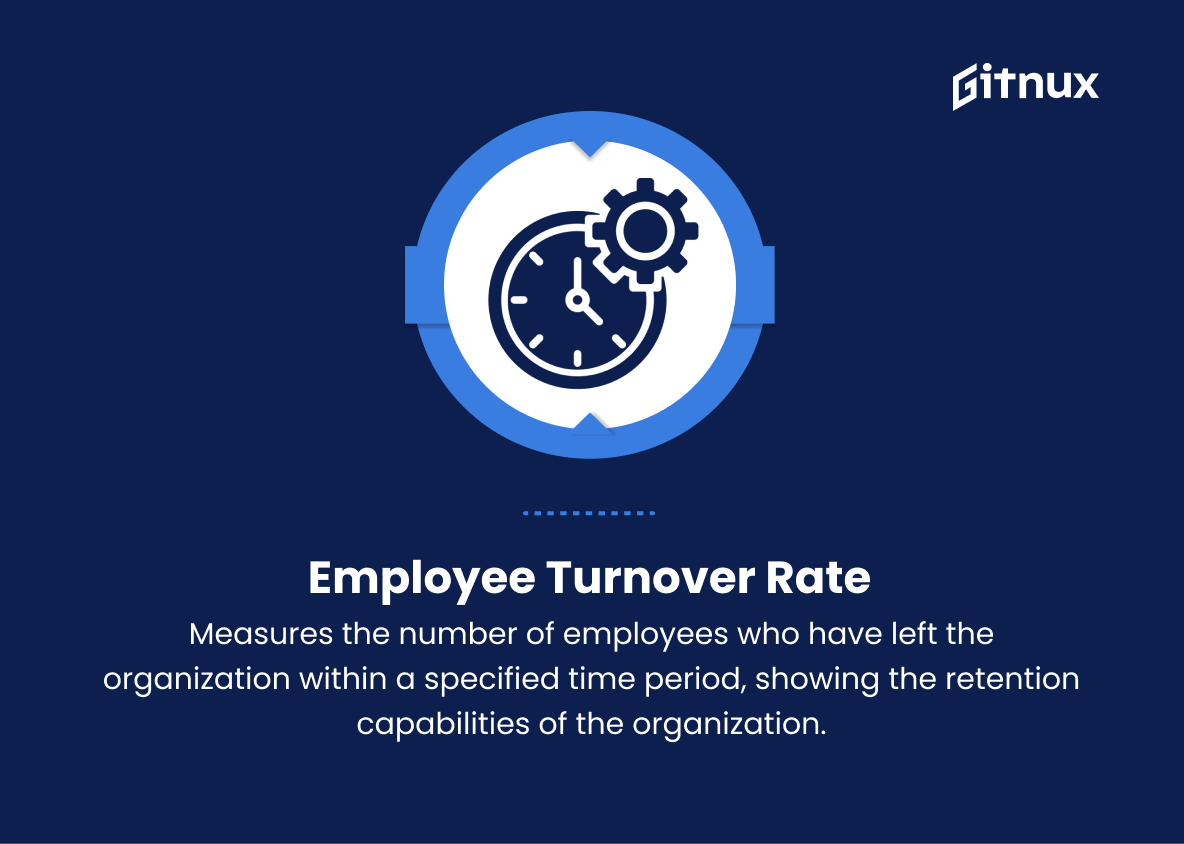In today’s fast-paced and competitive business world, the success of an organization significantly depends on its ability to attract, retain, and develop top talent. Managing and optimizing human resources become a crucial factor in driving business growth and ensuring long-term sustainability. This is where HR Metrics come into play. In this thought-provoking blog post, we will delve into the key HR metrics that every organization should embrace and analyze to make informed, data-driven decisions.
By keeping a close eye on these metrics, business leaders can gain valuable insights into the overall health and effectiveness of their workforce, thus enabling them to strategize and steer the company towards success. So, buckle up and prepare to embark on a journey of discovering the essential HR metrics that can transform the way you manage your most valuable asset – your people.
Key HR Metrics You Should Know
1. Employee Turnover Rate
Measures the number of employees who have left the organization within a specified time period, showing the retention capabilities of the organization.
2. Retention Rate
The percentage of employees who stay with the organization for a specified period, showing the effectiveness of employee engagement and retention programs.
3. Time-to-Hire
The average time taken to fill a job vacancy, from job posting to the successful candidate accepting the offer. This metric helps in evaluating the efficiency of the recruitment process.
4. Cost-per-Hire
The total cost involved in hiring a new employee, taking into account advertising, recruiter fees, interviews, and onboarding expenses. This measures the effectiveness and efficiency of your recruitment process.
5. Training and Development Investment
The total investment in employee training and development programs, indicating the organization’s commitment to nurturing employee skills and talent.
6. Training Hours per Employee
The average number of training and development hours provided to each employee, reflecting the company’s commitment to skill development and employee growth.
7. Employee Satisfaction
Quantifies the overall level of job satisfaction among employees, typically through annual surveys or feedback, to measure the effectiveness of employee engagement initiatives.
8. Absenteeism Rate
The ratio of days lost due to employee absences (e.g., sick leave, unexcused absence) to the total number of working days. This indicates the organization’s level of health and wellness.
9. Overtime Hours
The number of hours worked beyond regular working hours, which can indicate work overload, inefficiencies in processes, and employee stress levels.
10. Employee Productivity
A measure of employees’ effectiveness in their work, often calculated as the ratio of outputs (e.g., products, sales, services) to inputs (e.g., labor hours, costs), helping to evaluate their contribution to the company’s success.
11. Performance Metrics
Key indicators of employee performance, typically tied to specific goals and objectives, allowing the organization to evaluate the effectiveness of performance management initiatives.
12. Diversity and Inclusion Metrics
Evaluates the makeup of the workforce in terms of demographics, such as gender, age, and ethnicity, to measure the organization’s commitment to fostering a diverse and inclusive workplace.
13. Employee Net Promoter Score (eNPS)
A metric derived from asking employees how likely they are to recommend the organization as a place to work, on a scale of -100 to +100, with higher scores indicating higher levels of employee loyalty and advocacy.
14. Succession Planning Metrics
Measures the effectiveness of an organization’s talent pipeline, evaluating the readiness of employees for leadership and management positions, and the number and quality of internal candidates for key roles.
15. Compensation and Benefits Metrics
Evaluates the competitiveness of the organization’s pay and benefit programs, comparing them to industry benchmarks and best practices to ensure that the company attracts and retains top talent.
Key HR Metrics Explained
Key HR metrics play a crucial role in understanding the overall health and performance of an organization. Employee Turnover Rate and Retention Rate help gauge the retention capabilities of an organization and the effectiveness of employee engagement programs. Time-to-Hire and Cost-per-Hire aid in assessing the efficiency of the recruitment process, while Training and Development Investment and Training Hours per Employee highlight a company’s commitment to nurturing employee skills. Employee Satisfaction, Absenteeism Rate, Overtime Hours, and Employee Productivity shed light on the well-being and effectiveness of employees.
Performance Metrics, Diversity and Inclusion Metrics, Employee Net Promoter Score, and Succession Planning Metrics are essential in evaluating performance management initiatives, the organization’s inclusivity, employee loyalty, and the strength of the talent pipeline. Lastly, Compensation and Benefits Metrics ensure that an organization maintains competitive pay and benefits programs to attract and retain top talent. By monitoring these metrics, organizations can make informed decisions to maximize employee satisfaction, productivity, and long-term success.
Conclusion
In summary, the significance of key HR metrics in driving an organization’s success cannot be overstated. By closely monitoring and leveraging these critical indicators, HR professionals can make data-driven decisions that strategically align with the company’s goals, foster employee satisfaction, and ultimately boost productivity.
It is essential for organizations to identify and measure the metrics that matter most for their unique needs and keep refining and adapting these as they evolve. By doing so, HR professionals can remain at the forefront of industry trends, unlock the full potential of their human capital, and contribute to the long-term success of their organization.















